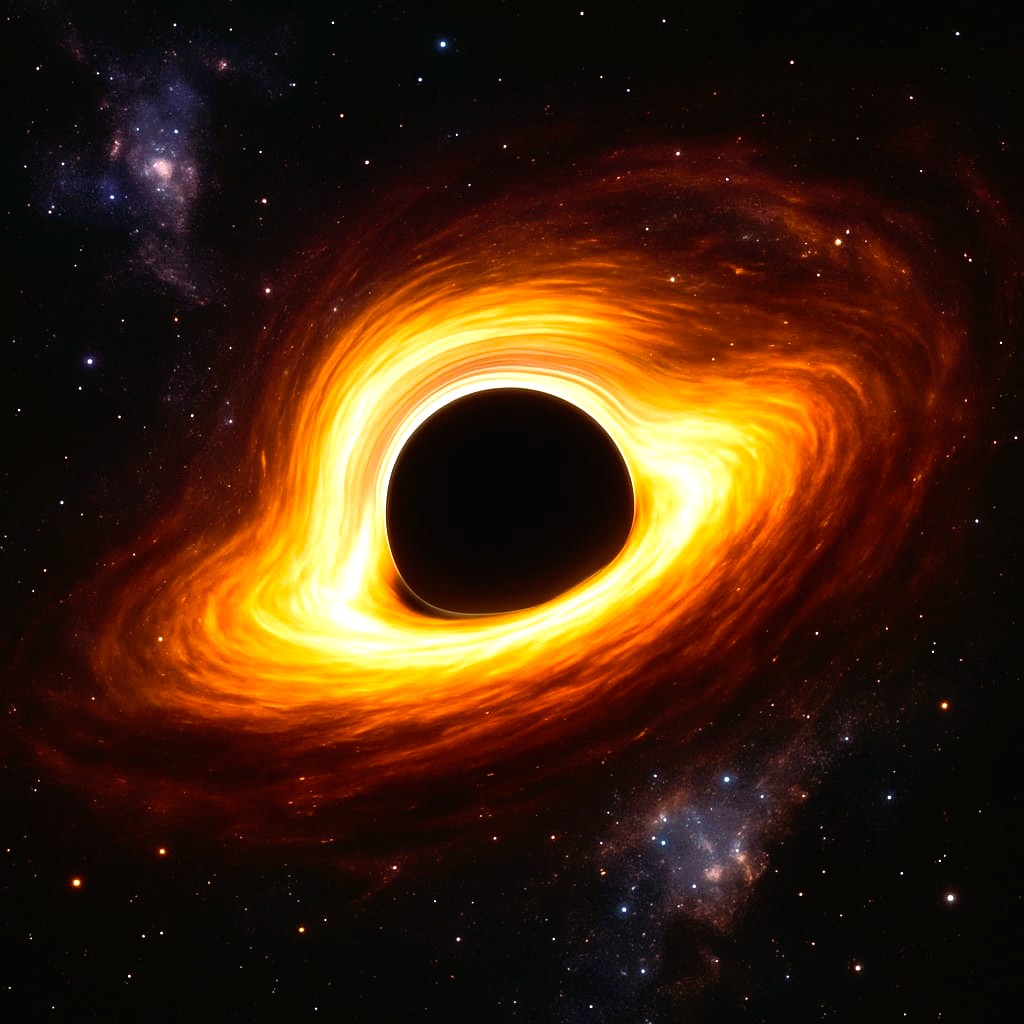
Introduction
Black holes are among the most mysterious and captivating objects in our universe. With gravity so strong that not even light can escape, they challenge our understanding of physics, time, and space. But what exactly are black holes, and why do they capture the imagination of scientists and space enthusiasts alike?
What Is a Black Hole
- A black hole forms when a massive star collapses under its own gravity at the end of its life cycle. The result is a region of space where gravity is so intense that all matter and even light are trapped. At the center lies a point called a singularity, where density becomes infinite and the laws of physics as we know them break down
The Anatomy of a Black Hole
Event Horizon: The boundary around the black hole. Once crossed, nothing can return.
Singularity: The core of the black hole, where matter is infinitely dense.
Accretion Disk: Hot gas and debris spiraling around the event horizon, often emitting X-rays.
Types of Black Holes
- Stellar-Mass Black Holes: Formed by collapsing stars, usually 3–10 times the mass of our Sun.
- Supermassive Black Holes: Found at the centers of galaxies, including our own Milky Way. They can weigh millions or billions of solar masses.
- Intermediate Black Holes: A mysterious middle ground, harder to detect but potentially formed from star cluster collisions.
- Primordial Black Holes: Hypothetical black holes formed soon after the Big Bang.
Do Black Holes Destroy EveryThing
Contrary to popular belief, black holes don’t roam the galaxy devouring everything. Their gravitational pull only affects objects that come too close. If the Sun were replaced by a black hole of the same mass, Earth’s orbit would remain unchanged—though we’d lose all sunlight.
Time And Black Holes
We can’t see black holes directly because no light escapes them. However, scientists observe their effects on nearby matter and light. In 2019, the Event Horizon Telescope captured the first “image” of a black hole by photographing its glowing accretion disk.
Conclusion
Black holes push the boundaries of what we know about the cosmos. They are not just cosmic vacuum cleaners—they are laboratories for testing the limits of physics. As our technology improves, we may one day unlock the secrets hidden within these cosmic giants.
